The content of the article
How to care for the dragon plant at home? This plant does not require unusual conditions of detention. Despite the fact that it comes from tropical forests, with proper care it grows well and develops in our climate. Naturally, in the house, not on the street. And even the brutal dry air in a room with central heating is not capable of harming him. But, only with the right attitude.
In principle, even the most inexperienced room florist is quite capable of containing a dragon flower. You just have to follow a few simple conditions.
The soil
Dracaena is very unpretentious to the composition of the soil. You could say the rougher the better. After buying a plant in a store, it must be transplanted. As a rule, the flowers are in the transport ground, which is not very suitable for full development.Therefore, they either buy specialized soil for palm trees or dratsen, or make up the soil mixture themselves. Moreover, it is not difficult to do this.
It is necessary to take in equal parts clean sand, peat and rough turfy ground. Mix thoroughly and spill a strong solution of potassium permanganate. A day after cultivation, the earth is ready to embrace the plant.
Transplant features
Which pot to take? The size of the pot is very easy to determine. For every 15 cm stem should be 5 cm diameter of the tank. That is, if your dracaena is 60 cm high, then the diameter of the pot should not be less than 20 cm. The material does not matter. Dracaena feels great in plastic and ceramics.Again, clay is still preferable. It has enough weight so that the flower does not tumble.
When transplanted dracaena
You can repot the plant all year round. But we recommend doing it around the end of winter. With the onset of spring, the dracaena begins an active phase of growth, and it is better not to disturb her at this time.
Young plants need to be transplanted once a year, adults - less. Oriented to the roots. As soon as they become visible above the surface of the soil, then it is time.
The least traumatic root system is the transshipment of a fully earthen coma. If your flower is already too large for transplanting, then just replace the top 7 cm of the earth with fresh one once a year. Just be careful not to damage the roots.
We water dracaena
This plant is very fond of water. But does not like to swim in it. Therefore, the drainage need such a thickness. Proper planting provides a good outflow of excess fluid from the root system.
The best thing to do is to put a pot of dragon flower in a wide pan. Peat, moss or expanded clay are put into it. All liquid that drains from the pot will be absorbed into these materials.Then it will gradually evaporate, creating the necessary level of moisture around the flower.
In general, it is advisable to spray the plant more often directly along the crown of lukewarm, defended water. This will prevent the tips of the leaves from drying out.
When and how much water dracaena? In winter, rarely, in the summer more often. The exact schedule is difficult to make. It all depends on the conditions and size of the plant. Usually decided to focus on the dryness of the earthy coma. As soon as the top 2-2.5 cm dry up, it is necessary to water it. It is strictly forbidden to overdry the soil. Dracaena can not stand it and die. It is better to pour a little more and after 15 minutes to drain the excess liquid from the pan, than underfill and destroy the flower.
Water for irrigation should be at room temperature. If she is poured from the tap, then it is recommended to allow her to stand at least 12 hours. Then boil and cool. Instead of boiling, you can freeze the liquid in the freezer.
Only without fail after each preparatory procedure, the water is drained from the sediment. If this is not done, then very soon a white patina will appear on the surface of the soil in the pot. These are deposits of hard salts, which are not at all beneficial for the dracaena.
Air temperature
Dracaena loves warmth, but does not tolerate heat at all. The most optimal conditions of maintenance vary in the temperature range from +18 to + 26 ° С during the period of active growth. This is approximately from the second decade of March to the second decade of October.
During a clearly defined rest period, the plant requires different temperatures. It is from +14 to + 16 ° С. If you do not provide such conditions, then the uninspirated dracaena will not be able to fully grow and develop in the summer. She just does not have enough strength.
By the way, if the temperature of the content drops below + 11 ° C, the probability of disease outbreaks is high at any time. Perhaps even the appearance of rot and dropping leaves. This feature should be considered.
Lighting
A lot of light for dracaena is very good. But only scattered. Direct sunlight literally burns spots on the leaves. And when there is a lack of lighting, the shoots grow stunted and thin, the leaves turn pale and hang rags.
If the plant is on the windowsill, then pritenuyut his light blinds, white paper, light curtain. If on the table or nightstand next to the window, then additional shadowing is not required.At the same time, good lighting should be year round. That is, during the winter holidays too.
When artificially illuminated dracaena feels great. Only this should be special fitolampy for plants. They give the right amount of ultraviolet radiation without burning the crown with a high temperature of incandescence.
Shaping
Often dracenum is grown in winter gardens or offices. Because it grows up to 3.5 meters in height. But if you do not engage in the formation of plants, the spectacle will bring few aesthetically pleasant moments. A long bare trunk with a tuft of leaves at the crown.
Much more beautiful looks like a small trunk with several shoots. In this case, it turns out very lush crown, which always looks great.
How to achieve such a result, if dracaena pulls up? By itself, she will not release side shoots. We'll have to sacrifice a smart hat. For this you will need:
- sharp sterile knife
- garden pitch or crushed activated charcoal tablet
The cut is made at a level of about 6-7 cm below the first sheet. That is, in the hands should be the top with a short handle.And in the pot - one stem without leaves. No pity, it will be better. Just look strictly to make the cut perfectly smooth. Even the tiniest tinkers provoke rotting. Wound sprinkled with coal or covered with a pitch.
After some time, buds will swell on the trunk and young shoots will appear. By the way, the top is not thrown away. It can try to root under cover in the soil or even just in the water. Only be sure to slice a dip in the root stimulator. So the process will go much faster.
The danger of forming is that a new escape may appear only one. Then the shaping procedure will have to be carried out again, after some time. By the way, if the young shoots cut off the tops, then in the end you can get a beautiful tree with a lush crown. Only be sure to give the plant to move away from the previous injury. For some time they even help: they water it with a solution of any adaptogen. This may be epin, zircon and other biological agents.
Council Begin to form a plant when the height of the main stem reaches at least 28 cm.
Pests
In the Russian climate there are no insects that love the dragon plant. But there are a couple of omnivorous pests that even cacti are capable of. It is a spider mite and a scythe. They often settle on the plant, if the microclimate around the dry and hot. Under normal humidity, they do not appear. But, if such an attack overpowered the plant, then he would have to arrange an alkaline or potassium shower for him.
To do this, tightly wrap the pot with polyethylene, cling film, foil. Put it in a basin or bath. Then the crown is washed generously with a solution of household or potash soap. After 15 minutes, rinse with warm weak stream of clean water.
If such a procedure did not bring improvement, then you will have to use any systemic insecticide.
Diseases
In general, dracaena is not particularly prone to disease. Often, they occur only when coincident provocative factors. It can be:
- excessively high or low air temperature
- stagnant water in the pan or pot
- constant drafts
- low humidity microclimate near the pot
If these problems are eliminated, diseases can be avoided. The first sign is most often the appearance of the leaves.They begin to dry up the tips, there are yellow, brown spots, which then turn black. Bulk opade foliage signals a strong defeat dracaena. It is urgent to identify the cause and save the plant.
At the same time, periodic yellowing of 2-3 lower leaflets is a natural norm. The old ones are dying off, the young ones are growing up, everything, as was introduced by nature. In general, the average life of a leaf in good conditions is about 2.5 years. If yellowness is abhorrent, you can simply cut the leaf to a healthy tissue. Anyway, he will gradually die and fall off.
Fertilizer
During the period of active growth, the flower must be regularly fed. It can be any mineral or organic fertilizer. Dracaena is omnivorous, and gratefully responds to any treats.
It is important not to overdo it. Once every 3 weeks will be quite enough. And do not exceed the dosage specified by the manufacturer. More benefit from this will not work. But the burning of small feeding roots - easily.
Useful tips
- In the summer you can make dracaena breathe on the street or balcony. Only cover from strong winds and drafts.She feels great in the garden, under a little shading.
- Over time, a lot of dust and dirt accumulate on the leaves. Young plant is easy to wipe with a damp soft cloth. Well, an adult tree perfectly tolerates a regular warm shower. And do not have to rub each leaf.
- Adopted for greater beauty, sprinkle the top layer of soil in a pot with small pebbles or gravel. We do not recommend this, because the root system must breathe freely. And the pebbles partially interfere with the evaporation of excess moisture.
How to care for the dragon plant at home? As can be seen from the text, it is not difficult at all. Simple observance of elementary rules, a little bit competent care and more love. Dracaena will appreciate the efforts and will delight you with a beautiful exotic look.
Video: care for dragon season at home

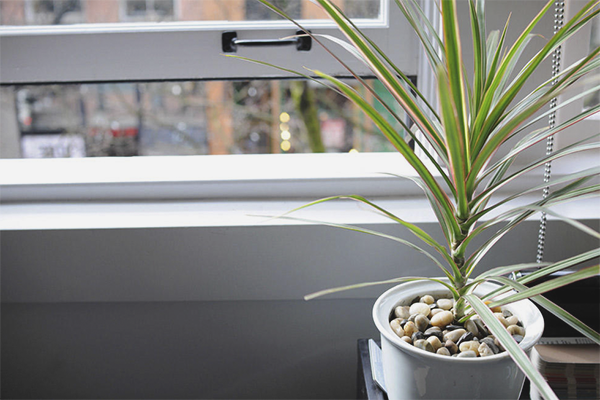
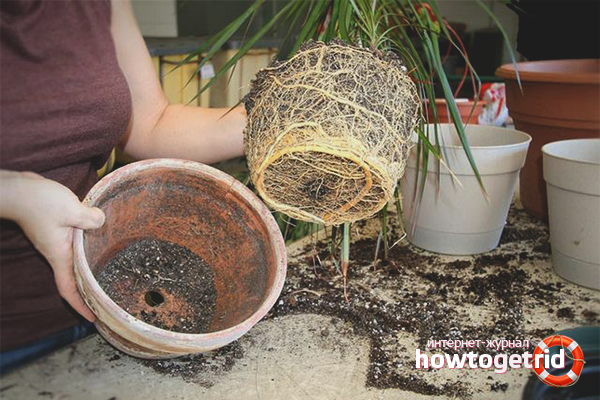
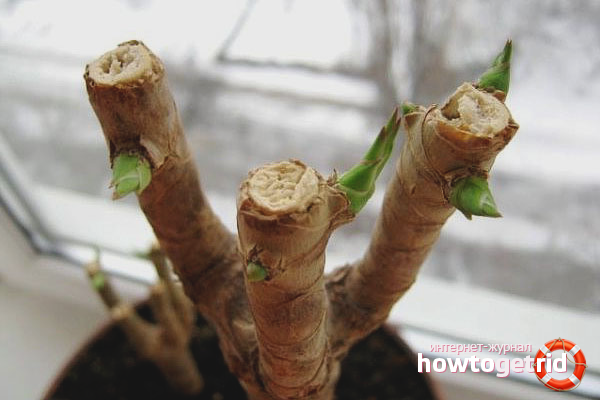
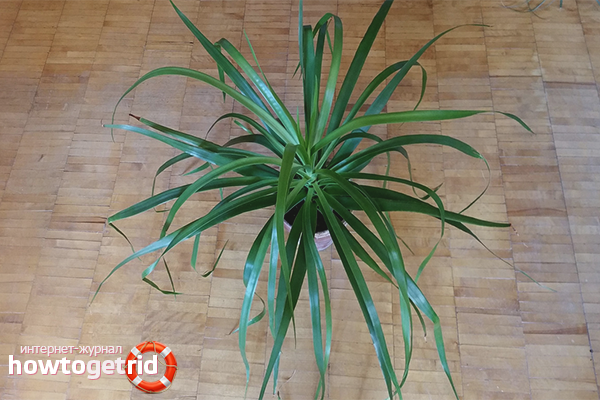


 2 votes, on average: 3,50 out of 5
2 votes, on average: 3,50 out of 5


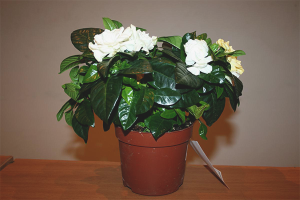
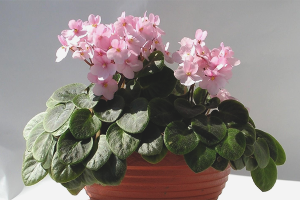



To send